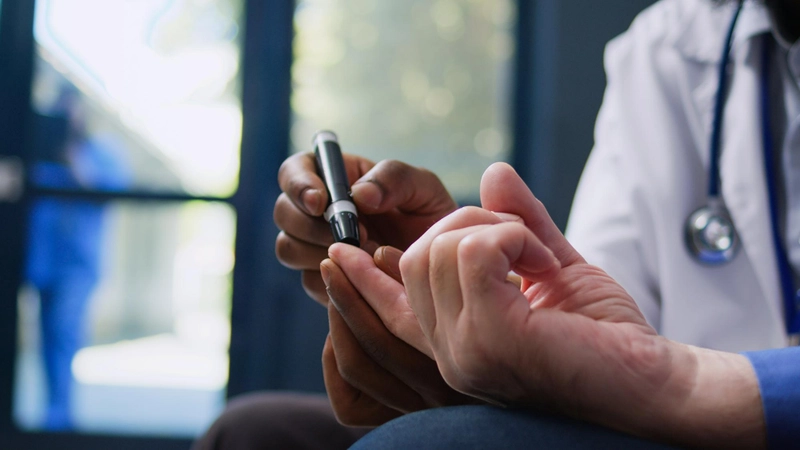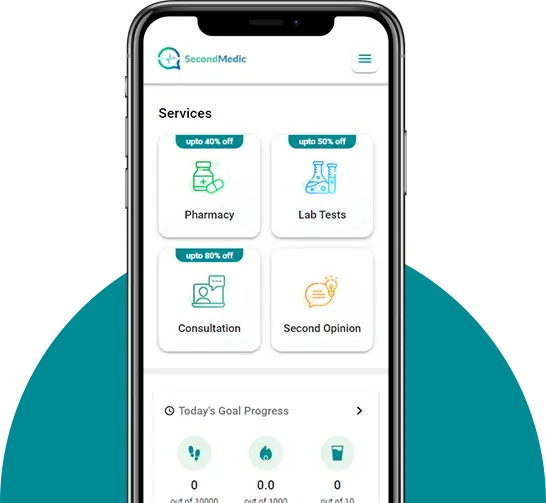- Published on: Nov 03, 2023
- 3 minute read
- By: Secondmedic Expert
Antibiotic Resistance And The Future Of Infectious Disease Treatment
Are we on the verge of a post-antibiotic era? Can our current arsenal of antibiotics withstand the ever-evolving onslaught of antibiotic-resistant bacteria? These questions loom large as we grapple with the growing problem of antibiotic resistance. In this 1500-word blog, we will delve into the world of antibiotic resistance, exploring its causes, consequences, and innovative approaches to combat this looming health crisis. We'll also discover the best probiotics to take with antibiotics, explore natural penicillin alternatives, and learn about emerging solutions like phage therapy and antimicrobial supplements. Join us on this journey to understand the future of infectious disease treatment.
Antibiotic Resistance: A Growing Threat
As antibiotic-resistant bacteria continue to proliferate, our ability to combat infectious diseases is at risk. Let's explore the roots of this issue and delve into strategies to address it.
Understanding Antibiotic Resistance
Antibiotics, once hailed as miracle drugs, are now facing a significant challenge. Antibiotic resistance occurs when bacteria evolve to withstand the drugs meant to kill them. This resistance has been driven by various factors, including overuse and misuse of antibiotics, incomplete treatment courses, and the widespread use of antibiotics in agriculture.
The Consequences of Antibiotic Resistance
The consequences of antibiotic resistance are dire. Increased mortality, longer hospital stays, and higher healthcare costs are just the tip of the iceberg. We must address this issue urgently to secure the future of infectious disease treatment.
Innovative Approaches to Combat Antibiotic Resistance
As the problem of antibiotic resistance escalates, so does our need for innovative solutions. In this section, we'll explore these novel approaches and how they can reshape the landscape of infectious disease treatment.
1. Phage Therapy: A Natural Alternative
Phage therapy, an age-old but resurging treatment method, involves using bacteriophages, which are viruses that specifically target and kill bacteria. This approach offers a promising solution to antibiotic-resistant infections.
2. Antimicrobial Supplements
The use of antimicrobial supplements, such as silver nanoparticles and honey, has gained attention as potential alternatives to antibiotics. These substances have shown promise in combating infections without promoting resistance.
3. Natural Penicillin Alternatives
For those seeking natural alternatives to antibiotics, exploring the world of herbal remedies and natural penicillin sources may hold the key. We'll uncover some of the most potent natural options.
Best Probiotics: Your Allies in the Fight
When undergoing antibiotic treatment, it's essential to maintain a healthy balance of gut flora. The use of probiotics can help prevent some of the unwanted side effects of antibiotics.
The Best Probiotics to Take with Antibiotics
While antibiotics kill harmful bacteria, they can also disrupt the balance of beneficial bacteria in your gut. Taking specific probiotics alongside antibiotics can help mitigate this imbalance and reduce the risk of side effects.
Best Practices After Antibiotics
After completing an antibiotic regimen, it's crucial to rebuild your gut health. We'll explore the best probiotics to take post-antibiotics and the importance of maintaining a diverse gut microbiome.
Testing and Diagnosis: A Step in the Right Direction
Proper testing and diagnosis are fundamental to addressing infectious diseases and ensuring appropriate treatment. Let's explore various tests and diagnostic tools to aid in this process.
1. Care Anti-Infection Solutions
From at-home test kits to online consultations with healthcare professionals, Care Anti-Infection Solutions are a game-changer in diagnosing and treating infections. Discover how these resources can empower individuals to take control of their health.
2. UTI Medicine for Women: A Tailored Approach
Urinary tract infections (UTIs) are common, especially among women. We'll delve into the best UTI medicines tailored for women, offering effective relief from this uncomfortable condition.
3. Antibacterial Ointments: First Aid for Skin Infections
Skin infections can range from mild to severe, and it's essential to have the right tools for treatment. Antibacterial ointments provide a quick and effective solution to combat these infections.
The Future of Infectious Disease Treatment
With the growing problem of antibiotic resistance, our future approach to infectious disease treatment must be multifaceted. We've explored some innovative solutions, but what lies ahead in the broader context of medical advancements?
Online Medical Stores: A Convenient Solution
Online medical stores have transformed the way we access medication and healthcare products. The convenience of ordering online is particularly valuable for individuals with infectious diseases.
Online Lab Tests: Empowering Patients
Online lab tests allow individuals to take control of their health by ordering a range of diagnostic tests from the comfort of their homes. This accessibility is especially crucial in the era of antibiotic resistance.
Online Doctor Consultations: Telemedicine's Role
Telemedicine has gained momentum as a means of seeking medical advice and consultations online. In the context of antibiotic resistance, this method can help patients access timely treatment without physical visits to healthcare facilities.
Online Consultations: Your Health, Your Control
Online consultations with healthcare professionals provide a channel for patients to discuss their symptoms, receive guidance, and obtain prescriptions without leaving their homes. This approach is both practical and relevant in addressing infectious diseases.
antibiotic resistance is a growing problem that requires a multifaceted approach. We've explored the causes and consequences of this issue and delved into innovative solutions such as phage therapy, antimicrobial supplements, and natural penicillin alternatives. Additionally, we've discussed the importance of probiotics in mitigating the side effects of antibiotics and various testing and diagnostic tools to aid in treatment. Online medical stores, lab tests, and doctor consultations have emerged as valuable resources in the fight against infectious diseases, offering convenience and accessibility. As we face the challenges of antibiotic resistance, these tools and approaches provide hope for the future of infectious disease treatment. Remember, your health is in your hands, and the future is yours to shape.
By incorporating these innovative strategies and embracing online healthcare resources, we can be better prepared to combat antibiotic resistance and ensure a healthier future for all. Together, we can create a world where infectious diseases are no longer the threat they once were.
Read FAQs
A. 1. Limited Treatment Options: As bacteria continue to develop resistance to existing antibiotics, our ability to treat common infections diminishes. This can lead to more prolonged and severe illnesses, increasing healthcare costs, and higher mortality rates. 2. Complex Infections: Antibiotic-resistant infections tend to be more complex and difficult to manage. Patients with these infections may require more extended hospital stays, more aggressive treatments, and may face a higher risk of complications. 3. Global Health Threat: The rise of antibiotic resistance is a global health threat. In a highly interconnected world, resistant bacteria can easily spread across borders, making it challenging to contain outbreaks. 4. Impact on Routine Medical Procedures: Common medical procedures, such as surgeries, cancer treatments, and organ transplants, rely heavily on antibiotics to prevent infections. As antibiotic resistance grows, these procedures become riskier due to the increased likelihood of infection. 5. Economic Consequences: The economic burden of antibiotic resistance is significant. The costs associated with extended hospital stays, additional medications, and more complex treatments strain healthcare systems and individual budgets.
A. 1. Overuse and Misuse: Antibiotics have been overprescribed and misused in both human medicine and agriculture. This overuse has accelerated the development of resistance. 2. Incomplete Treatment: Patients not completing their full course of antibiotics can inadvertently select for antibiotic-resistant bacteria. Incomplete treatment allows the surviving bacteria to develop resistance. 3. Widespread Use in Agriculture: Antibiotics are extensively used in agriculture to promote growth and prevent disease in livestock. This practice has led to the emergence of antibiotic-resistant bacteria in animals, which can transfer to humans through the food chain. 4. Lack of New Antibiotics: There has been a decline in the development of new antibiotics, making it difficult to keep pace with evolving antibiotic-resistant strains. 5. Global Travel and Trade: Bacterial strains and resistance genes can spread across the world through travel and international trade, making antibiotic resistance a global issue.
A. 1. Responsible Antibiotic Use: Healthcare professionals must prescribe antibiotics judiciously and patients must complete their prescribed courses. Education about the proper use of antibiotics is crucial. 2. Antibiotic Stewardship Programs: Hospitals and healthcare facilities should implement antibiotic stewardship programs to monitor and optimize antibiotic use, ensuring they are used only when necessary. 3. Infection Prevention: Robust infection prevention measures, such as hand hygiene and vaccination, can reduce the need for antibiotics. 4. Development of New Antibiotics: There's a pressing need to invest in research and development for new antibiotics to combat resistant strains. 5. Alternative Treatments: Explore alternative treatments like phage therapy, antimicrobial supplements, and natural remedies that can help combat infections without contributing to resistance. 6. Regulation in Agriculture: Stricter regulations on antibiotic use in agriculture can reduce the spread of resistance from animals to humans. 7. International Cooperation: Collaborative efforts on a global scale are essential to control the spread of resistant bacteria and share best practices. 8. Public Awareness: Raising public awareness about antibiotic resistance and the importance of responsible antibiotic use is vital. Informed patients can play a significant role in combating this issue.










